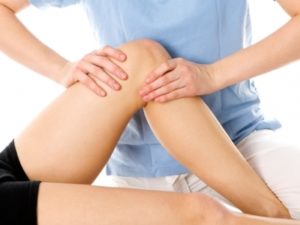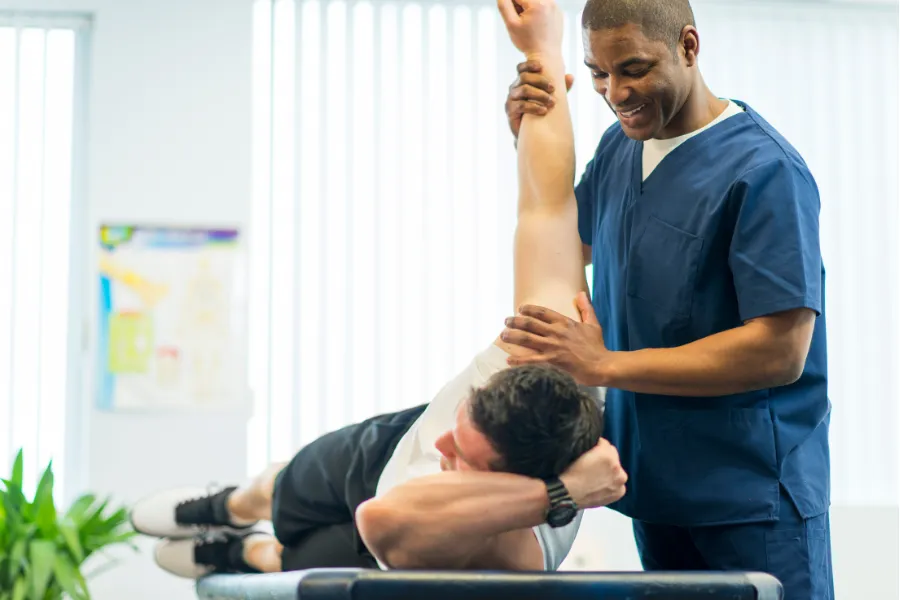The Difference Between Rheumatoid Arthritis and Osteoarthritis
Do your joints ache throughout the day?
 Arthritis is the most common form of disability in the United States, but, what’s the difference between rheumatoid arthritis and osteoarthritis?
Arthritis is the most common form of disability in the United States, but, what’s the difference between rheumatoid arthritis and osteoarthritis?
According to Centers for Disease Control and Prevention, an estimated 52.5 million adults (one in five) are affected by some form of arthritis.
In this post we break down the difference between rheumatoid arthritis and osteoarthritis.
Rheumatoid Arthritis (RA)
Rheumatoid arthritis (RA) is an autoimmune disease that causes chronic inflammation of the joints. Autoimmune diseases develop when the body’s immune system attacks and destroys healthy body tissue by mistake.
What Causes Rheumatoid Arthritis?
The cause of RA is not fully understood and no one knows for sure why the immune system goes awry. Some evidence shows genes, hormones and environmental factors, such as an infection with certain viruses and bacteria, may trigger the disease.
Symptoms of Rheumatoid Arthritis
The signs and symptoms of RA may vary in severity and may even come and go (period of decreased or no symptoms are called remission and periods of increased symptoms are called flares). As the disease progresses, symptoms often spread to the wrists, knees, ankles, elbows, hips and shoulders.
Signs and symptoms of rheumatoid arthritis include:
- Joint pain in the feet, hands and knees
- Swollen, tender, or stiff joints
- Joint redness, warmth or deformity
- Fatigue, fever and weight loss
Treatment for Rheumatoid Arthritis
Controlling inflammation and slowing the progression of the disease are the main goals of treating RA. Treatments usually include medications, occupational or physical therapy and surgery.
Osteoarthritis
Osteoarthritis is a form of arthritis caused by inflammation, occurring when the cartilage or cushion between the joints wears down.
What Causes Osteoarthritis?
Osteoarthritis typically occurs gradually over time but there are risk factors which may lead to osteoarthritis including:
- Age
- Stresses on the joint from sports
- Genetic defects in joint cartilage
Symptoms of Osteoarthritis
Symptoms of Osteoarthritis typically develop slowly and worsen over time.
Signs and symptoms of osteoarthritis include:
- Joint pain, tenderness and stiffness
- Loss of flexibility or range of motion
- Hearing or feeling a grating sensation when the joint is used
- Bone spurs forming around the affected joint
Treatment for Osteoarthritis
The main treatment goals for osteoarthritis include alleviating pain and improving function. There is no known cure for osteoarthritis, but fortunately there are treatments which can help reduce pain and maintain joint movement. Treatments for osteoarthritis include medications, physical therapy and surgery. Similar to RA, surgery is used only when conservative measures like medication and physical therapy is not providing pain relief.
How Can Physical and Occupational Therapy Help Rheumatoid Arthritis and Osteoarthritis?
Physical and occupational therapy are often times part of the treatment plan for patients with arthritis. The goal of physical therapy will vary, depending on the patient and the type of arthritis.
Ability Rehabilitation offers patients physical and occupational therapy to help all forms inflammatory conditions.
In every case, the physical therapist will perform an examination to determine the severity of the arthritis and better understand the symptoms. After the exam, the physical therapist will design a customized treatment plan which may include manual therapy, strengthening techniques and at-home exercises.
Benefits of physical therapy include:
- Alleviating impairments
- Improving functional status
- Promoting overall fitness
- Reducing risks of re-injury or progression of impairment.
- Improving a patient’s quality of life as it relates to movement and health
Occupational therapy can help patients with RA and osteoarthritis learn to handle the activities of everyday life and how to reduce strain on their joints during those activities. The occupational therapists at Ability Rehabilitation provide therapeutic interventions such as:
- Strengthening programs which are aimed at preserving or increasing muscle strength.
- Modalities which may include electrical muscle stimulation, ultrasound or thermal modalities such as heating pads and ice packs. Thermal modalities can help relieve local pain.
- Home and workplace modifications help modify your everyday environments to reduce motions that might aggravate arthritis.
- Custom splint fabrication are developed and used to make activities easier and less stressful for the joints and muscles.
- Manual therapy is hands-on physical therapy, which uses no devices or machines. Manual therapy techniques are used to decrease pain. During manual therapy, the physical therapist will use their hands to put pressure on muscle tissue and manipulate joints in an attempt to decrease pain.



